“While musically stretching can be risky, the nature of our improvisation is that the soloist is the climber, and the rest of the band is the rope. We always get pulled back in. Sometimes it’s the recovery that is the most fun and interesting—especially from the audience perspective. That’s what makes it a different show each night.”
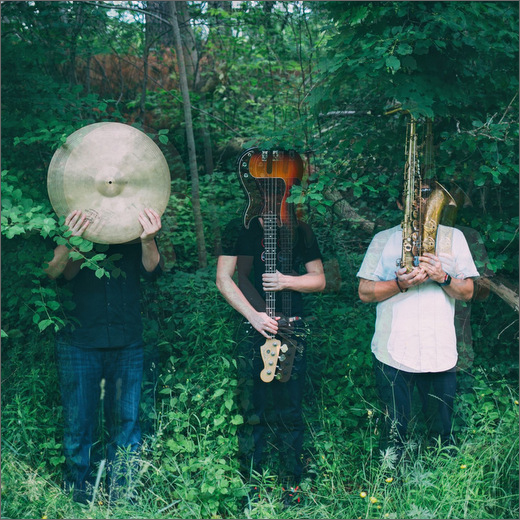
Idiosyncratic
Over the last few years, Warren Walker (saxophone & effects), Gaël Petrina (bass & effects) and Caleb Dolister (drums & percussion), together known as The Kandinsky Effect, have developed a unique sound and style. They captivatingly and inventively merge elements of luminary electronica, jazz fusion, hip hop, and everything exciting in between. As opposed to many jazz groups out there, their music is not an empty display of skill and technique (though they have and show plenty of both). These guys are all about playing together as a crystallized unit that produces electricity, tension and raw, powerful magnetism; Somnambulist, The Kandinsky Effect’s new album and third overall which was released only a few days ago via the multifaceted Cuneiform imprint, demonstrates it beautifully and more clearly than ever. With Somnambulist the trio takes its sound and style to the next level. It is the trio’s most crystallized and provocative work to date. Armed with a heavy dose of spirit, eclecticism and plenty of cunning maneuvers, it fiercely knocks down barriers between genres, and defies conventional modi operandi. It’s wild, unorthodox, rebellious, explosive. The Kandinsky Effect is without a doubt one of the most individual-sounding, refreshing and outrageous forces currently operating in the more exciting fringes of the musical spectrum. Will these guys be able to keep pushing forward without recycling themselves? Well, it’s a tricky task to perform, especially these days, and only time will tell of course. We must focus on the present, and at the moment, The Kandinsky Effect is alive, kicking and bursting with creativity like never before, and I think every adventurous music lover out there should give this very special effect a try.
 The story?
The story?
Dolister :: Warren and I met in the music department at University of Reno, Nevada, where we were both studying jazz performance. However, we never actually got a chance to play music together until 2009, when I subbed for the first time on few dates with Kandinsky Effect in California and Nevada. The band had already been around for a few years at that point with French-Parisian drummer Gautier Garrigue, who is a fantastic player. At the time, the band was still much more rooted in jazz and for the purposes of easy travel, Gael was just beginning to introduce electric bass into the group. Previously he had been playing mostly upright.
Those dates went really well, so the following summer the band returned to the US and to play a longer west coast tour. We managed to string together about 20 dates between San Diego, all the way up to Seattle. During that tour, we got to spend a lot of time working on new material where we naturally gravitated towards using more electronics, heavier rhythmic themes, and began moving away from traditional jazz-head structure. At the time, Gautier was getting busier with other projects in France, and since I had spent a lot of time helping to shape the new material we decided that I would most likely be the drummer on the next album (Synesthesia).
Synesthesia is the band’s second album, and was recorded the following summer during the Reykjavik Jazz Festival in Iceland. It was my first trip outside the US with the group. To be honest, I was pretty excited to hang in Paris and check out Iceland, but we basically ended up spending almost the entire time in rehearsal studios in preparation for a performance at the Reykjavik Jazz Festival, followed by a recording session at the well known Syrland Studios. We mixed the record the following summer in New York with a great engineer and bass player named Sam Minaie. The mixing process actually played a huge roll in shaping that album. We had done a lot of the effect work live in the studio, but we were able to really shape a lot of it in the mix, and we discovered a lot in that process. Overall, the experience of creating Synesthesia was quite eye-opening and we were able to put out a really interesting record that opened several doors for us.
Synesthesia was released through Cuneiform records in January 2013, so that year was mostly built around touring to support the release, but we did begin constructing some of the new material for Somnambulist. I say “constructing” because the experience of recording and mixing Synesthesia gave us a lot of ideas on what we could do from a composition standpoint. We had learned that with this group, we could develop ideas differently than with a traditional jazz project. We could write material that was much more like a pop arrangement, or built around cells; it wasn’t really confined to writing a form and then soloing over it. So instead of writing new songs, we began coming up with ideas for the kind of songs we wanted to write. We discussed ideas or themes, or we looked at different ways we could layer effects into the composition. And for the first time we really investigated what we could do with the material both in the recording studio, and then how it would transition into the mix. We examined those ideas, and then we began to write.
Petrina :: I met Warren in 2006 when he literally sat down with a band that Gauthier (first Kandinsky drummer) and I were part of. It was in a jazz club in St Michel, Paris, and we were there to play a show. Me and Warren talked a bit and discovered we have a similar taste in music (both of us like Tortoise and Hella for example). Warren also mentioned two bands that were not very big in Europe at the time: Kneebody and The Claudia Quintet. We soon decided to start a trio together. Warren had one of those shitty boss multi guitar effect pedals and I was like “you need to keep that on at all times to make your sax sound bigger and more like a guitar.” I came up with the title Kandinsky while at the painter’s expo at the Pompidou Center in Paris liking his phonetic sound and compositional approach to geometric figures. Major 7ths (triangles) and diminished chords (circles) can be heard throughout my tunes (Chomsky/Muji/Petit Loup).
I met Caleb in 2009 I believe for a short string of shows we did in the Reno/Truckee area and soon decided to make Caleb our permanent drummer. (Sorry Gauthier aka “Le Mec”, your still with us in our hearts.) Caleb is also a really talented multi tasker, a fantastic driver, web designer and drinking buddy.
 Sound & style?
Sound & style?
Dolister :: The music is rooted in jazz, influenced by electronica, rock, rhythmic modulations. But even with those factors, I personally think the music has a little bit of a punk rock vibe. It definitely doesn’t sound like punk rock, but the energy is very similar—especially when we play live. There’s a whole-hearted joy in the chaos that ensues when the FX get wild, the grooves get heavy, and we use that moment to metaphorically jump off the cliff. It’s basically adrenaline. This band is not afraid to get dirty, or try something that is crazy risky and fuck up. There could be 10 people in the audience, or 2000, and we’ll still take risks in the improvisations. Imagine rock climbing and launching yourself upward, grasping for a ledge to hold onto like Sylvester Stallone in “Cliffhanger.” Sometimes you land it, but sometimes you miss and start falling. Hopefully that rope catches you, haha! God, that movie was horrible (both Warren and I used to be rock climbers in our younger years).
Anyway, like a lot of the improvised projects we admire, we often manage to generate this intense buildup to a moment where all hope seems lost of landing on a synchronized downbeat—but it happens and it’s huge. While musically stretching can be risky, the nature of our improvisation is that the soloist is the climber, and the rest of the band is the rope. We always get pulled back in. Sometimes it’s the recovery that is the most fun and interesting—especially from the audience perspective. That’s what makes it a different show each night.
That’s not to say that all of our material is like drinking coffee + Red Bull shots. We have some very intricate songs that are meant to simmer, and some more jazz rooted ballads or subtle statements.
Walker :: Initially I started writing this music just to feel like I was more part of the band. Playing in more traditional jazz group settings I have always felt a little disconnected. I would just end up playing the head and take a solo and then watch everyone else get to have all of the fun. I just wanted to feel more involved. So that’s kind of what triggered the use of effects. I started to explore ways to make chords, ways to comp for myself, and design soundscapes in a chordless trio setting. Then as the years went by I got more and more interested in electronic music. I started to hear all of these things that electronic music artists were doing with sound manipulation and creation. In turn, these last few years I have been really focusing on my sounds with the effect pedals trying to emulate some of the things that these artists were creating in the studio and to bring them to the stage. I try to use the effects as part of my vocabulary as much as any improviser would with his or her own instrument. For me the effects are a separate instrument. For instance, in a live setting sometimes I’ll take the mic off of my saxophone and start micing the drums to run through my effects chain to give some more depth to the tune or just to give it that more electronic sound.
In trying to describe this music I am not even sure where to start. My love for music is so wide and I find myself listening to so many different styles that in turn it’s kind of hard to describe it. There are obvious influences there but trying to say it’s this or that is tricky. I just try to write tunes that reflect on the experiences that inspired them.
Petrina :: From day one, I have always put a strong emphasize on creating a more “pop” like experience to expand beyond the traditional jazz (older male) audience. This was done mostly in order to make sure we would be able to pack our shows in the early days with friends who weren’t necessarily keen on how fast you can play giant steps. As much as I love playing those changes, I very quickly realized that not everyone—and more specifically younger people—is into that. I also put a huge emphasize on the art/visual side of the band often blending our shows with art expos and VJ’s thus expanding our audience even more. Introducing the electric bass as opposed to acoustic also enabled the band to have a much bigger sound and push its boundaries in rock/electronica.
 The new album?
The new album?
Dolister :: Somnambulist was recorded outside of Paris in May, 2014. I’ve touched on this a little with the other answers, but again, this was an album that was constructed. We decided how we wanted to use FX to enhance the compositions, and then wrote songs around that. We wanted songs that would compliment each other. And, we thought about the finished mix while we were writing the material. I think that really influenced the writing and recording.
I will say that rehearsing and recording an album is challenging when you don’t all live in the same city. We really had to set aside a serious chunk of time and make our lives about this album throughout that duration. We had written a lot of the material before we began rehearsing it, but from the first rehearsals until the last day of tracking was only about three weeks. In that timespan, we had to arrange all of it, internalize the parts, capture the vibe, and decide how to approach tracking it all in 2 days. It was exhausting. But even in that short time span, you have to do daily progress checks and continuously evaluate everything. We actually ended up scratching 2-3 tunes because they didn’t fit the overall statement we were trying to make. After that we once again went back to work with Sam Minaie in New York for post production and mixing. I think it’s somewhat ironic that we named this album Somnambulist as we were all pretty much insomniacs throughout the recording process.
Walker :: I wrote nearly all of my contributions to this record in a little shack on the beach in Dominical, Costa Rica. I was just writing, practicing and surfing for about 3 months to see what would develop compositionally in a non-city environment. It was really a great experience to be in completely different environment and I believe it had a very positive effect on my writing and myself personally.
Everything started with some drum groove that I had in my head. I do almost all of my writing on drum pad controllers. This album was a 50/50 split between Native Instrument’s Maschine and the Ableton’s Push. I begin with the drum groove and then I write the bass line for the initial idea. When I find something I like I’ll start to write the melody line. After I start having a general idea of what the tune is going to sound like I begin to see what I can do to try and emulate my effects chain in Live and to see what effects can work where and when. A lot of the writing really puts a focus on the effects and I really set out to write music with the effects in mind. In terms of rehearsing for this album and every other album we have done in the past I can’t really stress how important it is for the shaping of our music. We all come to rehearsals with “finished” ideas but the tunes are always evolving into something new due to how open we are as a band during rehearsals. We make decisions as a band and shape the tunes as a band, so when it comes time to perform we sound like a band. I think what we were trying to achieve with this album is a coherent statement and make this record a true representation of who we are not only as a band but also as individuals on our instruments.
 Live?
Live?
Walker :: We have a US/Canada release tour in March and a European tour in April. For me anytime I get to travel around and play music is pretty much a dream come true but it is even more special when you get to go out and play your music. I am just happy to be contributing something positive to this world and to be sharing some of my experiences through this music.
 On heavy rotation?
On heavy rotation?
Petrina :: I think Flying Lotus/Thundercat, Aphex Twin, Debussy, Modeselector are still my go to records. Anything with Palladino or Jameson will do the trick as well.
Dolister :: These days I am listening to a lot of Meshuggah, the new Beck album, The Cellar and Point (also on Cuneiform), Animals as Leaders, and I’m kind of on a big Claude Debussy kick.
Walker :: This list is constantly changing but most recently I have been listening to Lapalux, Teebs, St Vincent, Baths, Moonhooch, Knower, James Blake, Ambrose Akinmusire, FKA Twigs, Mark Turner’s “Lathe of Heaven”, Brad Mehldau’s “Largo”, and Deerhoof.
 Message to the people?
Message to the people?
Dolister :: Dear people: Please keep supporting live music!
This album, and the music on it, is like a lot of other albums and music in the way that it literally took years to make it happen. Without even factoring in the money we invested—an album like this requires everything from years of practice and study, to writing compositions, traveling thousands of miles to rehearse + record, and then mix. And beyond the music is all the editing of videos, coding websites, getting in fights over what kind of artwork to use, sleeping on buses or floors, and spending months at a time to send emails and make phone calls to book tours. We, like most bands, do almost all of that work ourselves and it all boils down to the one night where we visit your city or town and play this really cool music. Help keep it alive by going to a show, grab a shirt or CD (even if just for the novelty since not everyone uses CDs these days), have a beer with the band, and enjoy the uniqueness of a live performance.
Petrina :: Jazz is not dead, just redefined. There’s good shit coming out all over the globe, one just gotta listen closely.
Walker :: Support live music and keep searching!
The Kandinsky Effect | Somnambulist | Synesthesia | Cuneiform






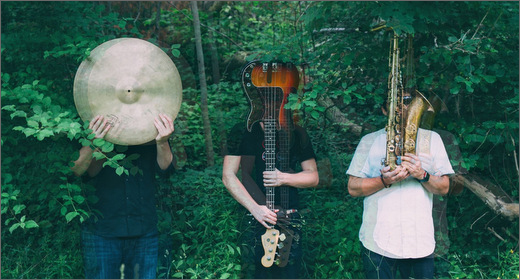




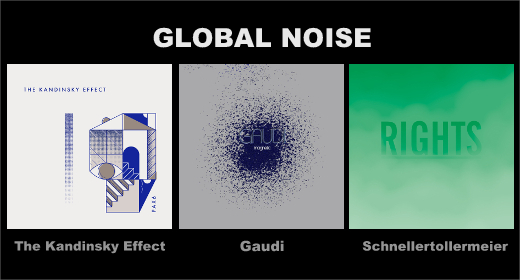
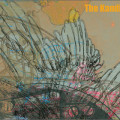
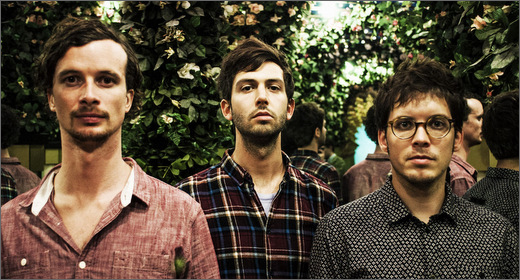
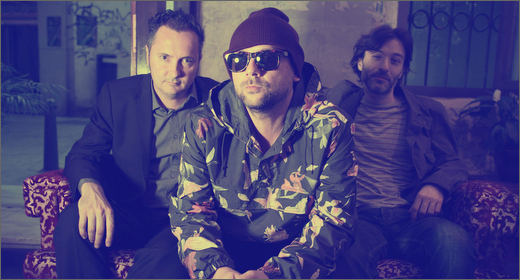








![Allmanna Town :: 1911 EP (Self Released) — [concise]](https://igloomag.com/wp/wp-content/uploads/2025/03/allmannatown-1911_feat2-75x75.jpg)



